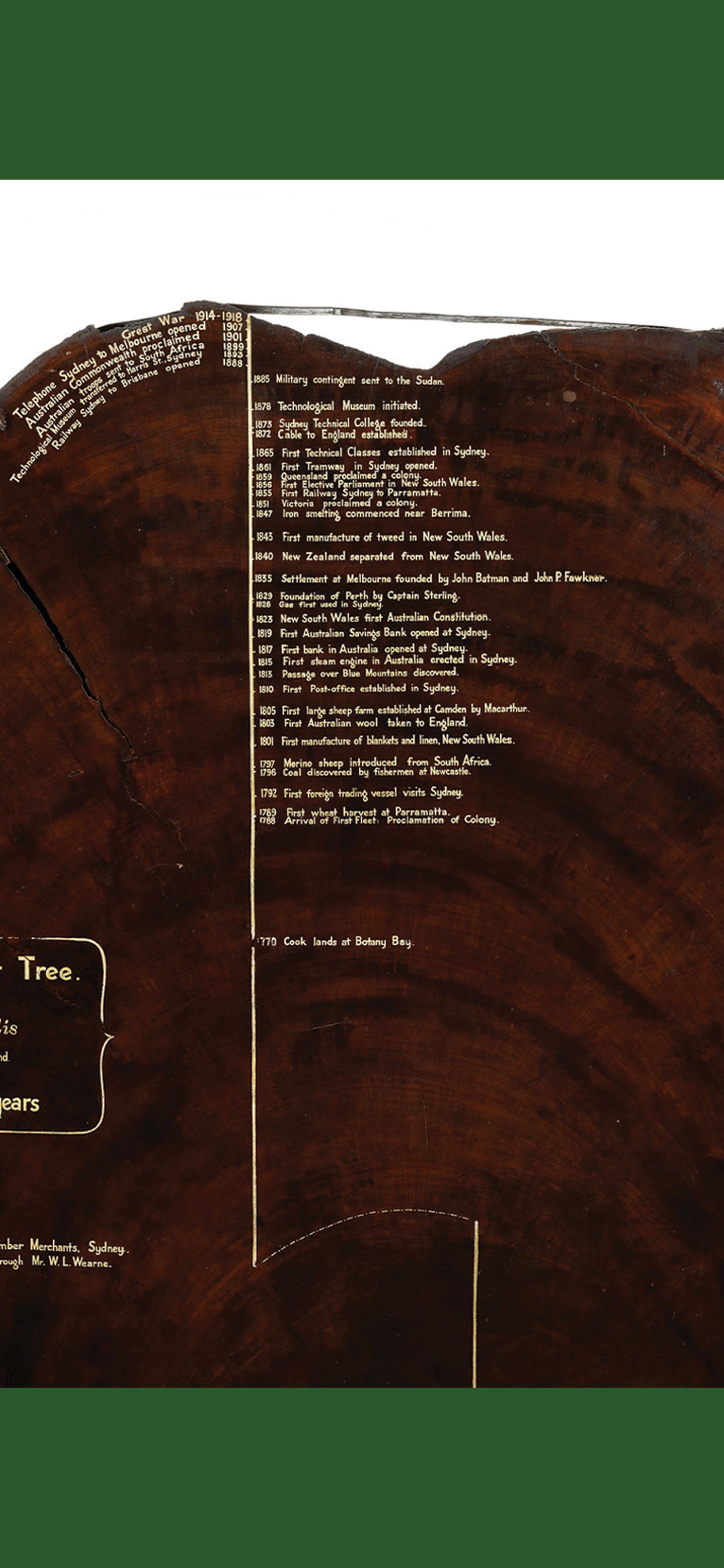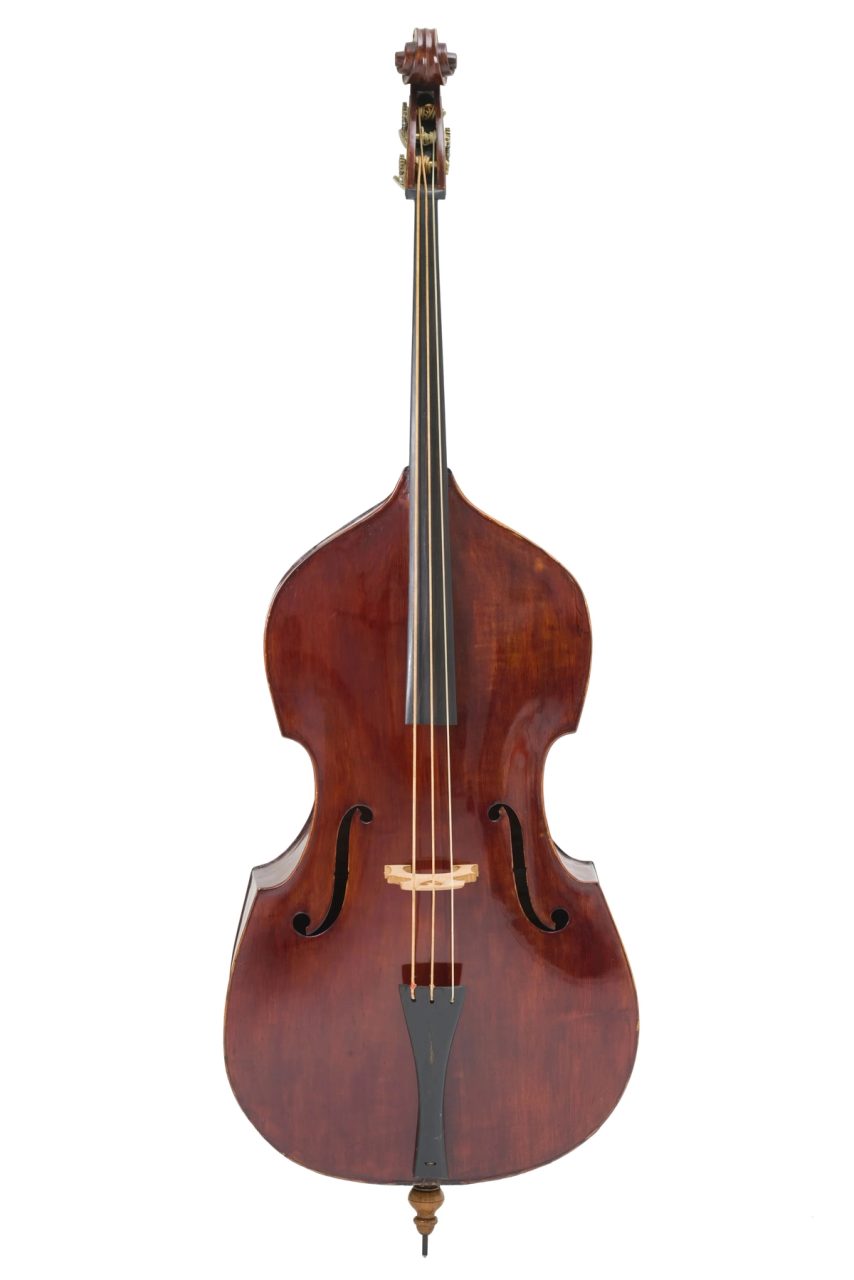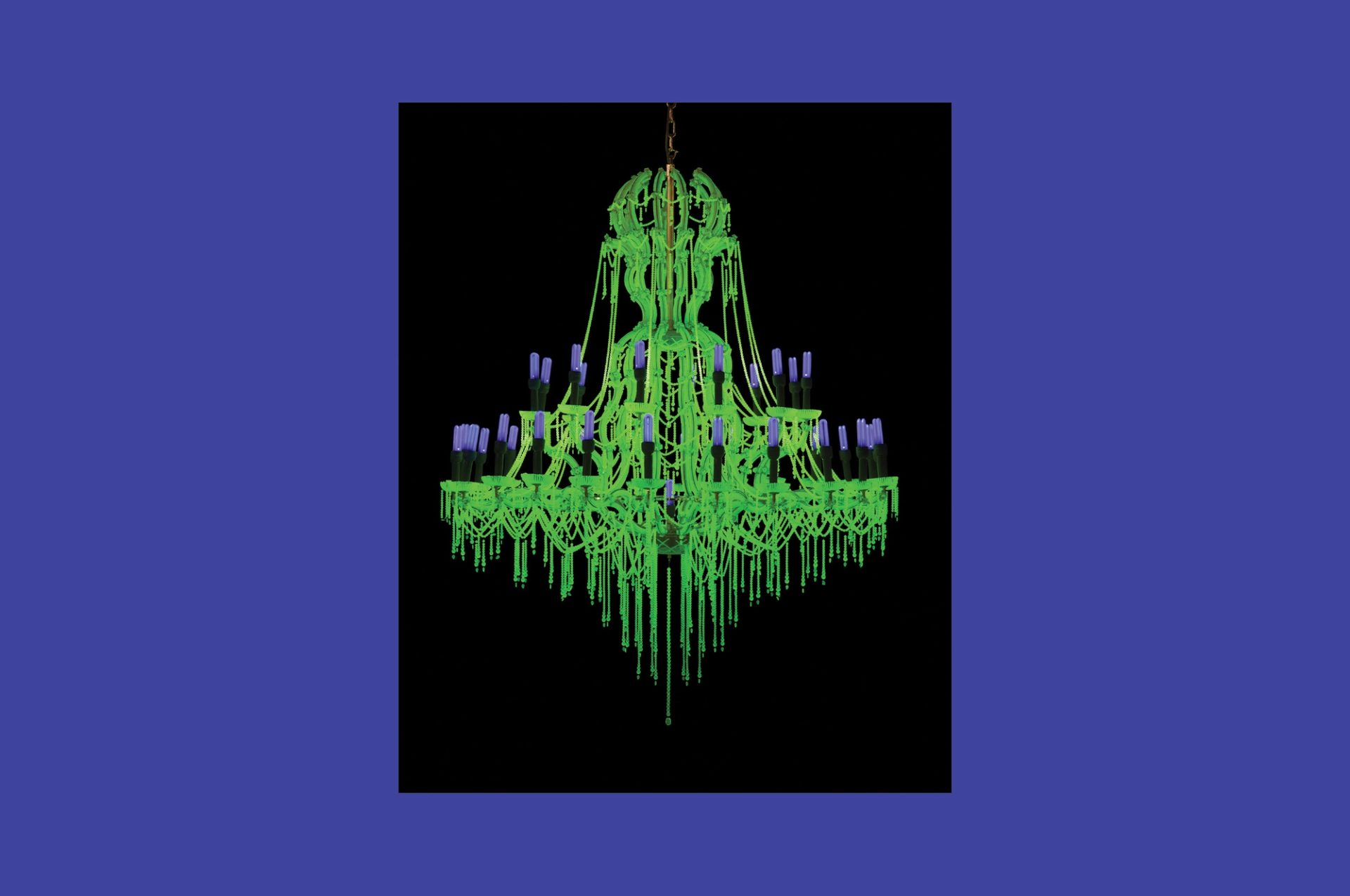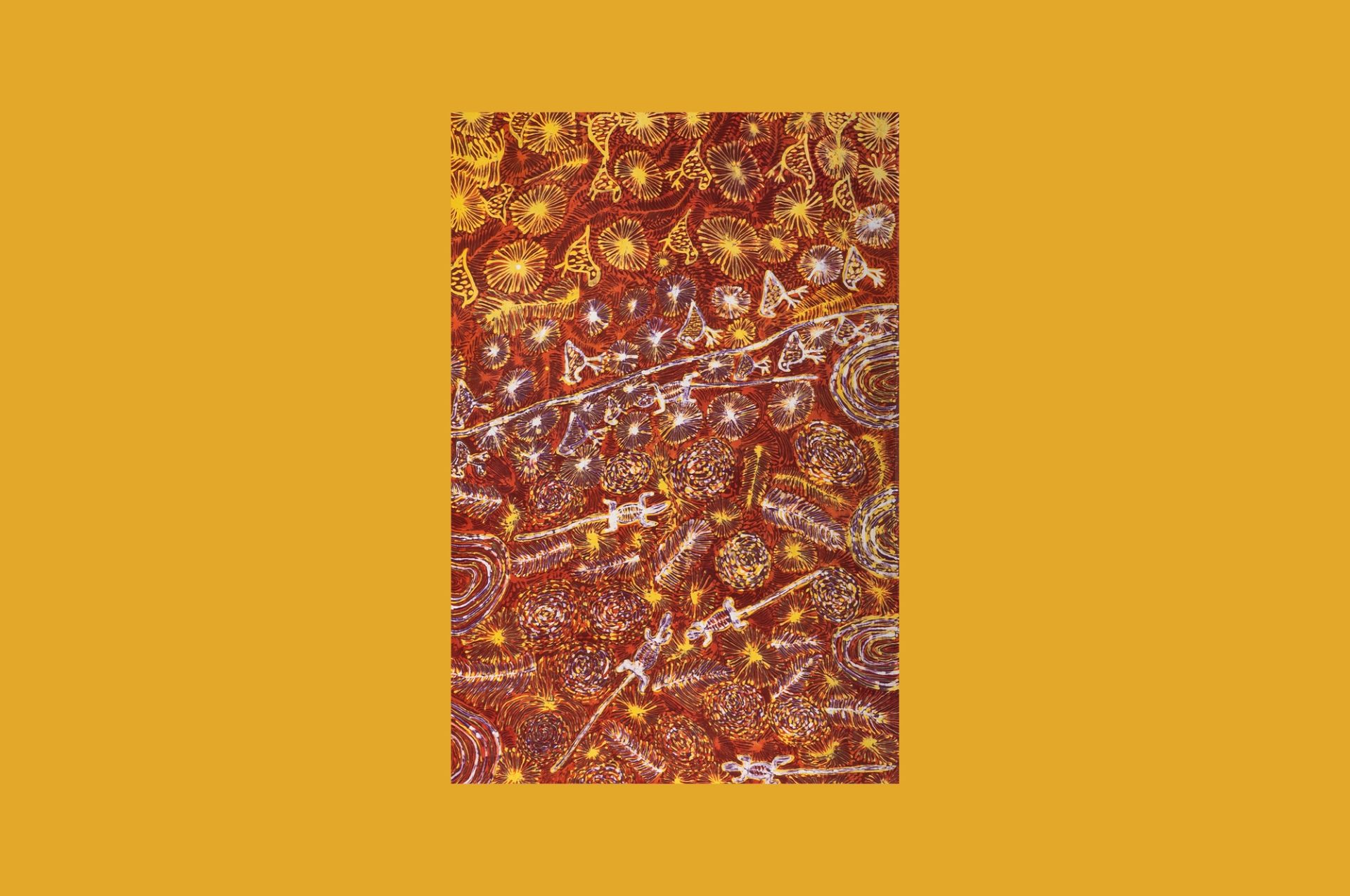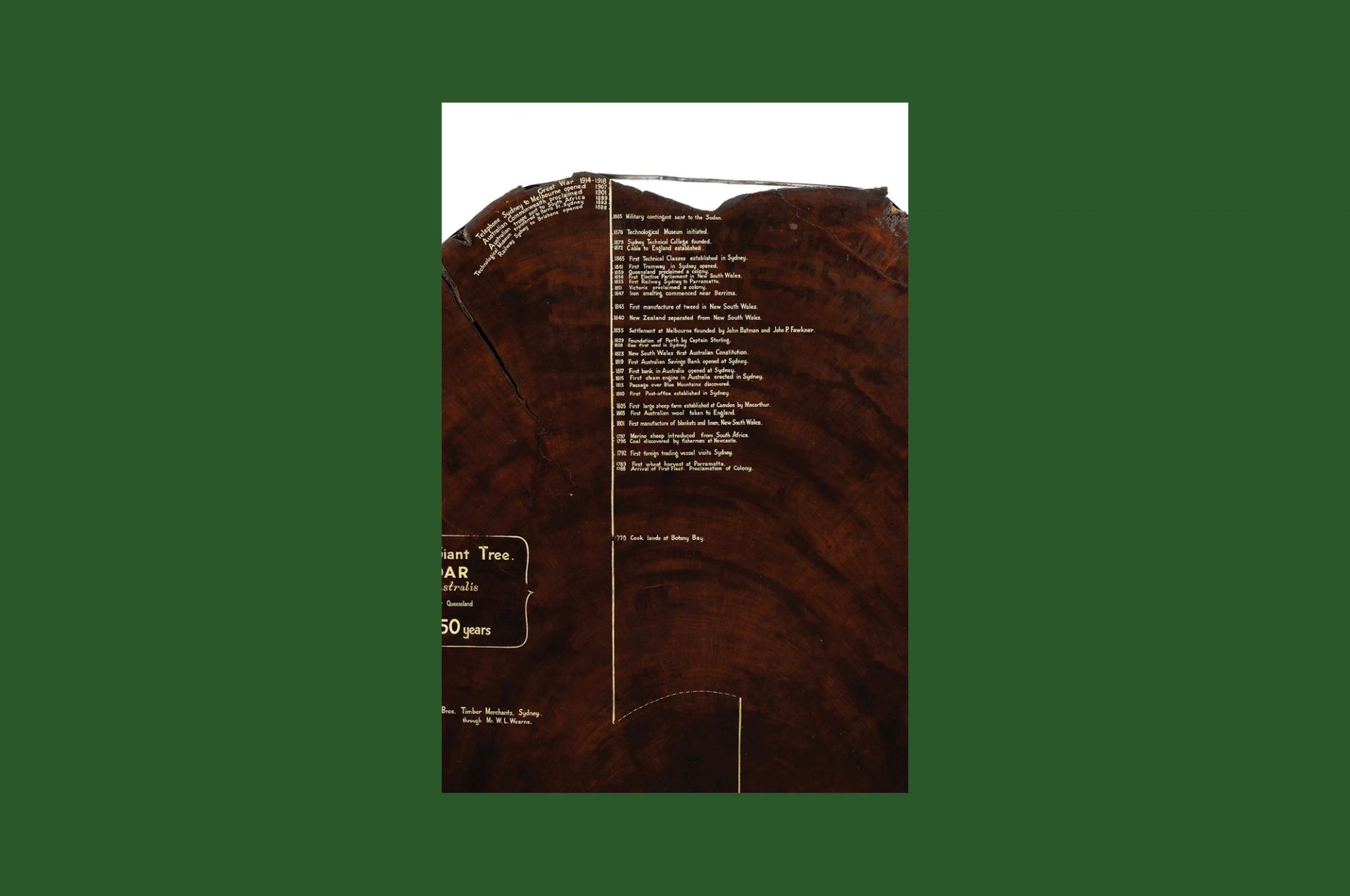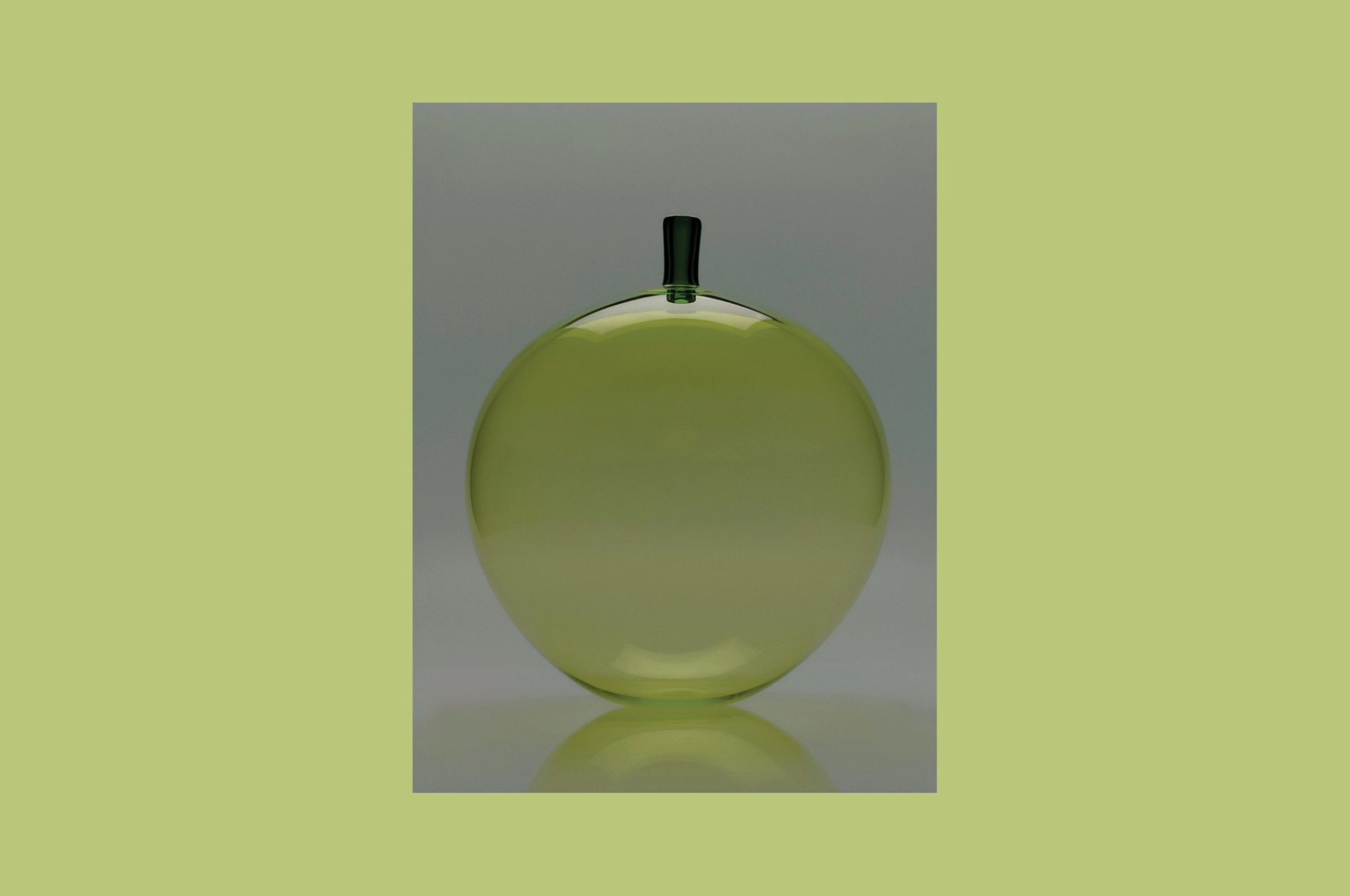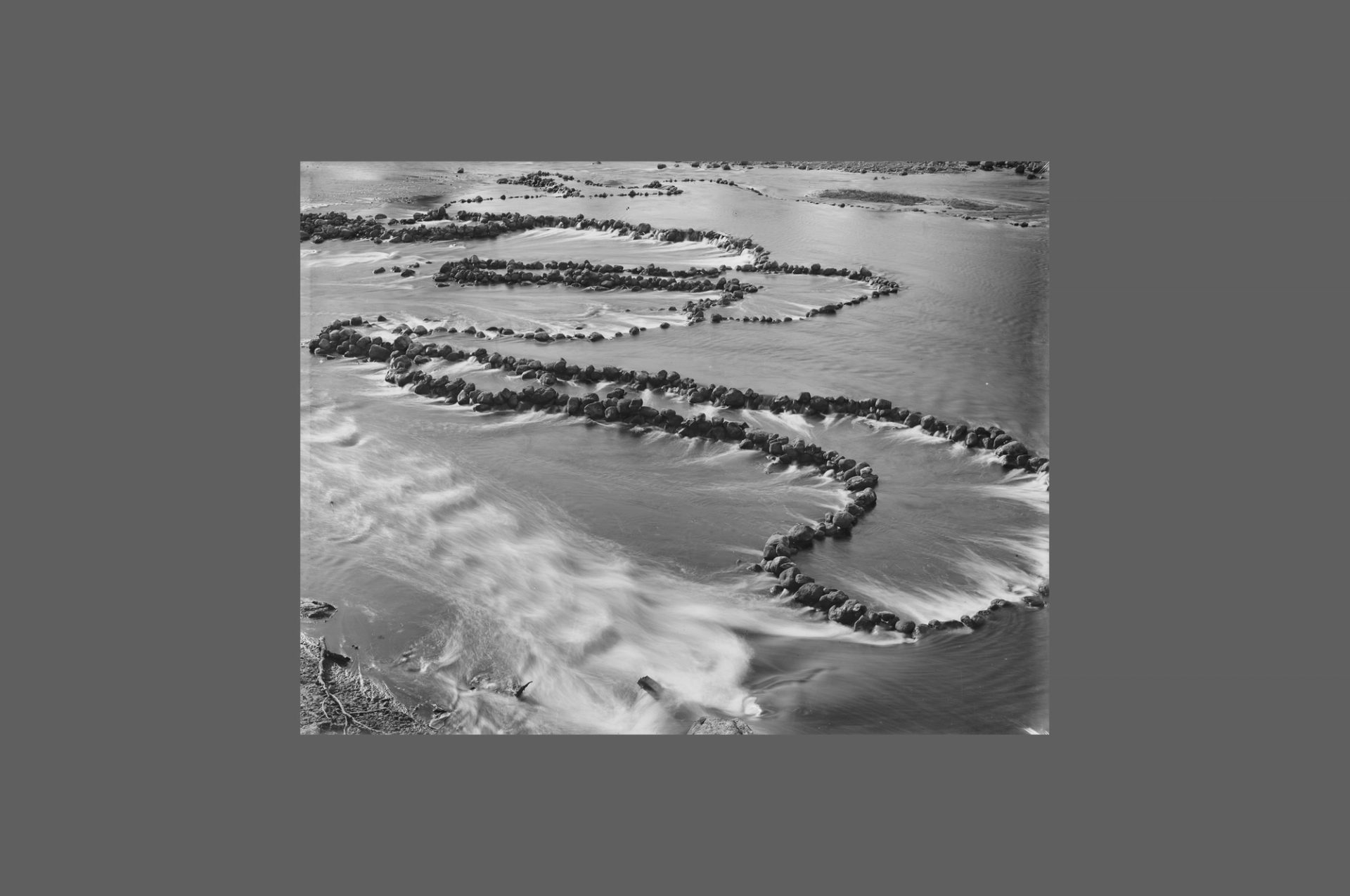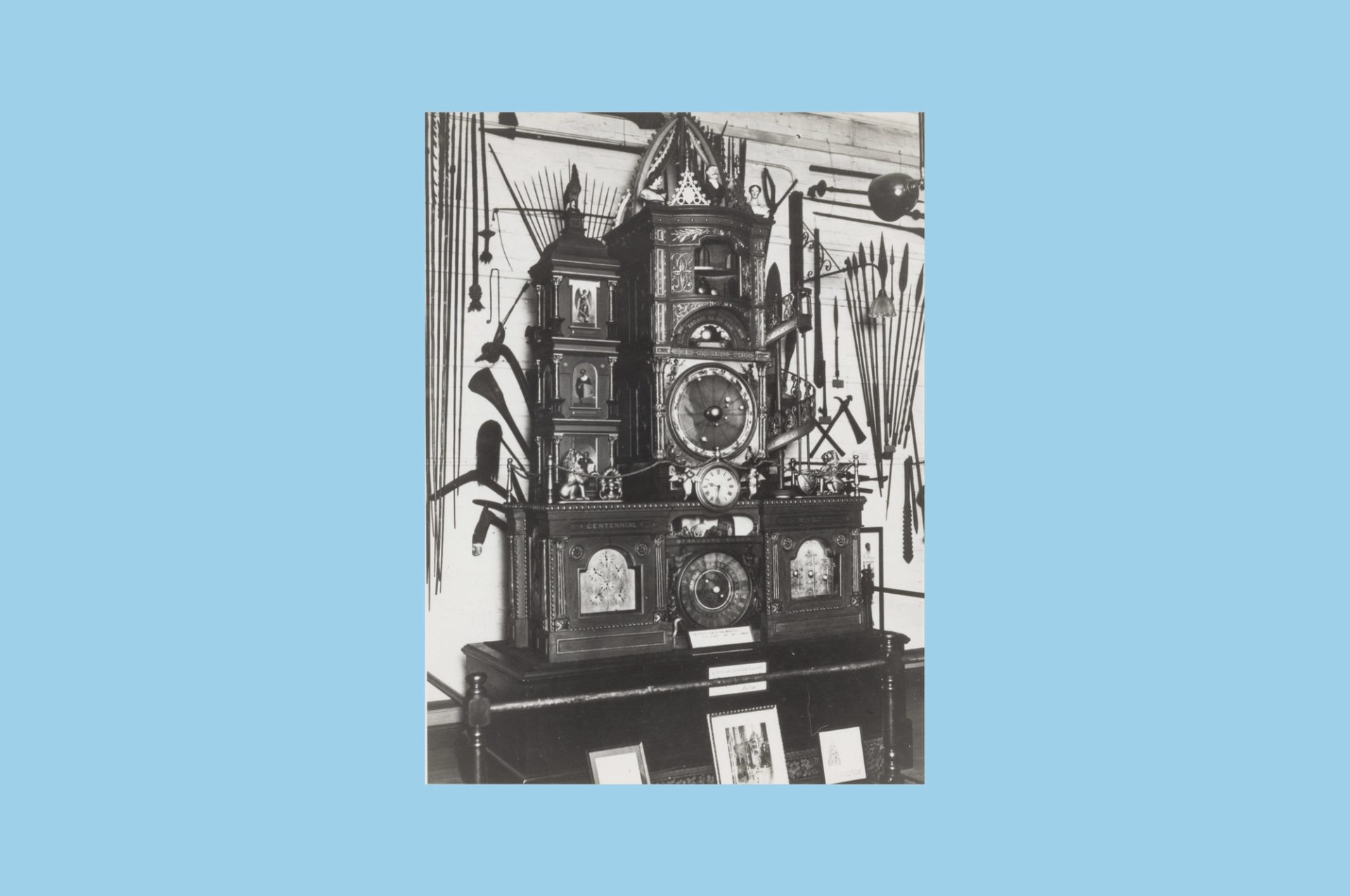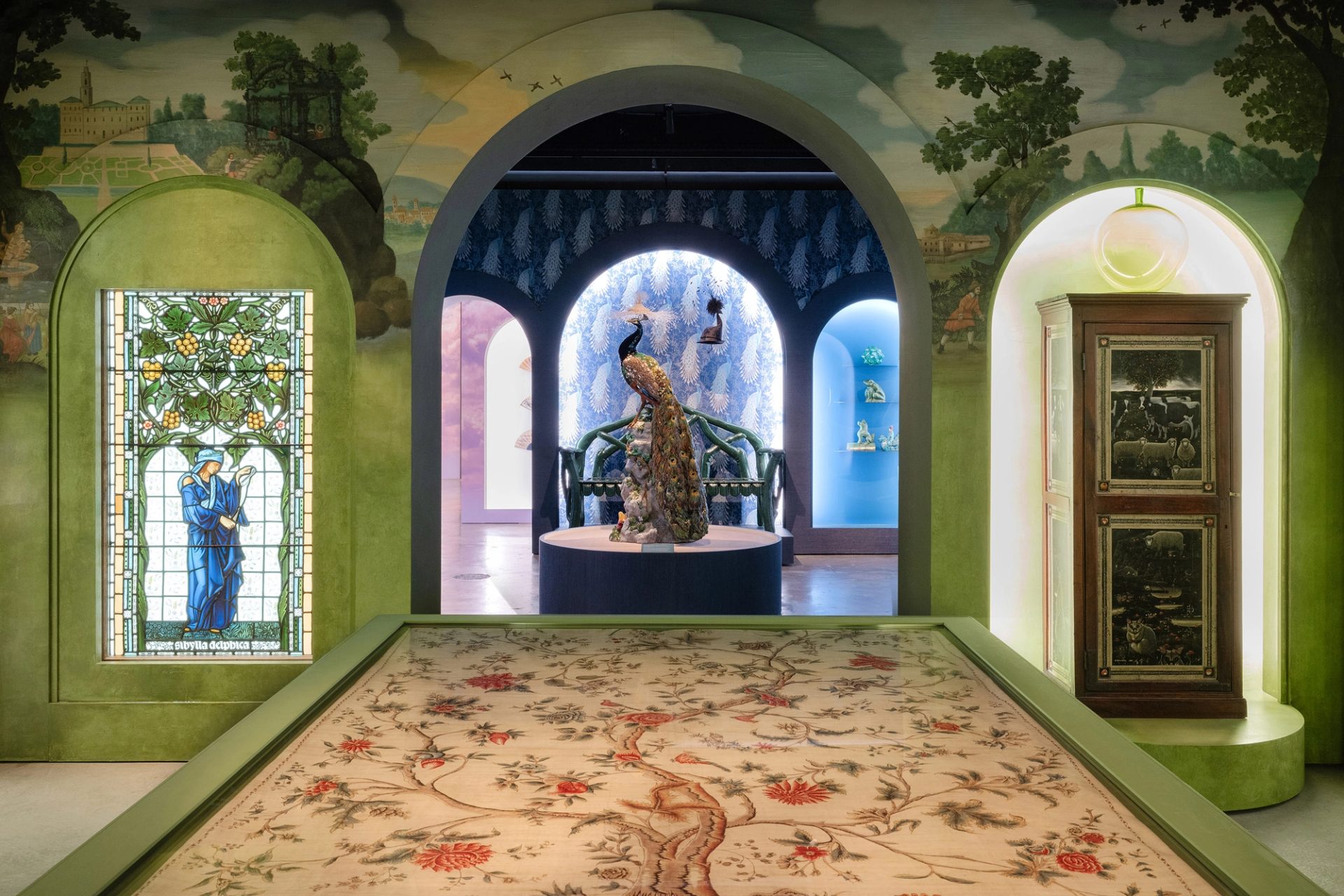Telling Time

‘Time is the longest distance between two places.’
How do we tell time?
How do we mark time?
Is it with the tock and tick of a clock, the chime of the hour bell? Is it with the waiting for and the weighting of a clock’s pendulum?
Is it with the growth rings through wood, every atom pulled from the ground and added to the tree’s girth, year by year an accumulation of weight and space? Is it in the distance we travel, from place to place, around and around, back and forth, the tick tock of our lives?
Or do we mark time with the sway of the bassist’s body, suspending us in a sonic universe where time is a note and the note must die for another to come? Do we mark time with song? Is a melody a slow unravelling of time’s gears, a surrender in sound? We sit inside a song and its time is our own; it is all the matter in the world.
And what does time tell?
What does time mark?
Three objects stand before us, all telling time in their own ways, all with their own marks of time, markers of the natural, the mechanical, the musical and the spiritual.
At the heart of this trinity is a wood specimen, a hunch from a red cedar tree 400 years old. Severed to reveal the years pushing outwards, a neat hand listing colonial events in straight lines across the curves of time. The writer starts a little rashly in the centre of the trunk, perhaps anticipating pithy events; more detail is added to the descriptions and the timeline shoves over to the left, a jolt in the space-time continuum. A polite reformatting, inviting other histories, other lists. Over time the cedar has splintered from itself, its weight no longer holding it together but tick by tock, gram by atom, wrenching it into a thick star. Here is a tree that has stopped growing and yet continues to transform. Time still makes its mark.
And that long case astronomical regulator clock, its tick tick tock tock stilled. Time continues to carve the grain of the cedar but the clock’s mahogany is carved not by time but for time, as precisely as its inner workings are forged. The red cedar has survived the time of summers and winters and fires and droughts; the sidereal clock has survived the time of distance travelled, its journey from England to Australia and round and round again now wound up in this place. Or wound down.
What time does this clock tell?
Or is time marked by the making of things?
The making of this bass takes the loopy time of ribs and belly, scrolls and pegs, the high-tension time of strings and bridge, soundpost and spike. Each part of this bass describes stretches of time spent shaping, carving, planing; as time is spent, time is also reduced with the shaving of the wood’s rings. Time is scattered on John Devereux’s workshop floor, wood shavings that tell a pre-colonial history; alongside local cedar, spruce and maple from Europe which would have been saplings when Johann Sebastian Bach was walking through forests. Wood too young to be made into manuscript paper for him but those trees, in time, eventually turned into instruments to play his music.
But why does Devereux decide, in his time in Fitzroy, to make this a bass with three strings, not the more common four? Besides making instruments, he plays in bands around Melbourne, performing in front of governors, royalty, and possibly down the pub for Fitzroyalty. Three-string basses were used by soloists, so this is an aspirational instrument. Why bother having four strings, when all you really want to do is play high and sing above the crowd? And why have four strings when that extra low E-string adds another 88 pounds of pressure to the instrument? Time makes wood strong, but too much pressure hampers the vibration of the wood, a pressure cooker of music. Time, once again, is reduced. As Devereux stands in his workshop, feeling the wood under his fingertips, assessing each grain and flame of the maple and cedar, he knows, with all the time he has devoted to making instruments, he knows with the wisdom time has given him, he knows that inside this wood is a three-string bass, not a four-string. And he knows the wood will need an extra inside brace to stop time and humidity from warping the instrument.
Time lies under Devereux’s feet in the wood shavings, time is felt with his fingertips and the skill of his craft, time speaks in his mind as he works on the bass, deciding the bass’s future. And time is at its most acute, its slowest rate, as Devereux completes the instrument. Seconds become days as he performs musical brain surgery, fitting the soul of the instrument, the soundpost. This is a dowel of the finest spruce, supporting the belly of the bass and transporting the vibrations of the strings to the back. Time can disappear inside this work, balancing the tension of the soundpost and the bridge. If Devereux fails here, all his time will have been wasted. He takes his time, listening to the bass, listening to the rings of sound.
The rings of sound in their turn divide time with music, and music with time signatures; pieces in 3/4 time, three beats to waltz to, or 4/4 time, four beats to march to. Time is lost in practice, playing and vibration, the days split not into hours but bars, not into minutes but beats. An afternoon is a symphony, an evening is a waltz.
And with music making, the wear begins. Decades of playing, carrying, storing, travelling, everything marks time in the wear of the instrument. Here is a body injured as if in a rugby game, treated with repairs that stand the test of time – a bent neck, a crack in the end, a split in the back, a punched hole in the ribs. This bass has needed time out.
Rings of wood, rings of sound, rings of time.
Time is quietened here. The tree has stopped growing, the clock has stopped ticking, the bass has stopped singing. We are suspended in a coma – time has not stopped, but for now, in this place, it has stopped moving. The time comes for these three objects to change, so we can know them in different ways; they cannot stay as they once were. They are transformed, they are no longer simply a tree, a clock, a bass. They are now museum pieces, invaluable treasures, sacrificed here, preserved here. These three have gone beyond their original identity and have become the idea of a tree, the concept of a clock, the reminder of a three-string bass. Their sacrifice is our gain. They are the epitome of death and transfiguration.
So how do we tell time? Is it the time it has taken for you to read this text, the time it has taken you to look at the photographs, to think, to weigh each object? Their time is collected here; it goes deep into the vortex of us. Time pares and peels our lives and releases new levels of knowledge.
The time we spend, the time we waste, the time we take, it all leaves a mark.
Time does tell.
About the Author
Eadric Le Brocq is a writer, musician and broadcaster with ABC Classic. He was born on the White Cliffs of Dover and studied music in Manchester, London and Berlin. After playing professionally in Europe and Hong Kong, Ed moved to Australia in 2003. He is the author of five books and has been shortlisted for numerous awards, including the Prime Minister’s Literary Awards. Ed’s latest book, Sound Bites (ABC Books, 2023), follows the bendy path of music from the Ancient Greeks to today.
Powerhouse Publication: 1001

This work appears in the latest Powerhouse Publication, 1001 Remarkable Objects. A celebration of the scale, breadth and relevance of the decorative arts and design collections held by Powerhouse Museum it catalogues the eponymous exhibition that opened at Powerhouse Ultimo, 26 August 2023. The publication opens with a series of 32 still life images produced by photographer Lauren Bamford in collaboration with art director and stylist Sarah Pritchard. It is punctuated by 15 narratives, from the four curators plus 11 Australian authors commissioned by Powerhouse to respond to one or more remarkable objects.











